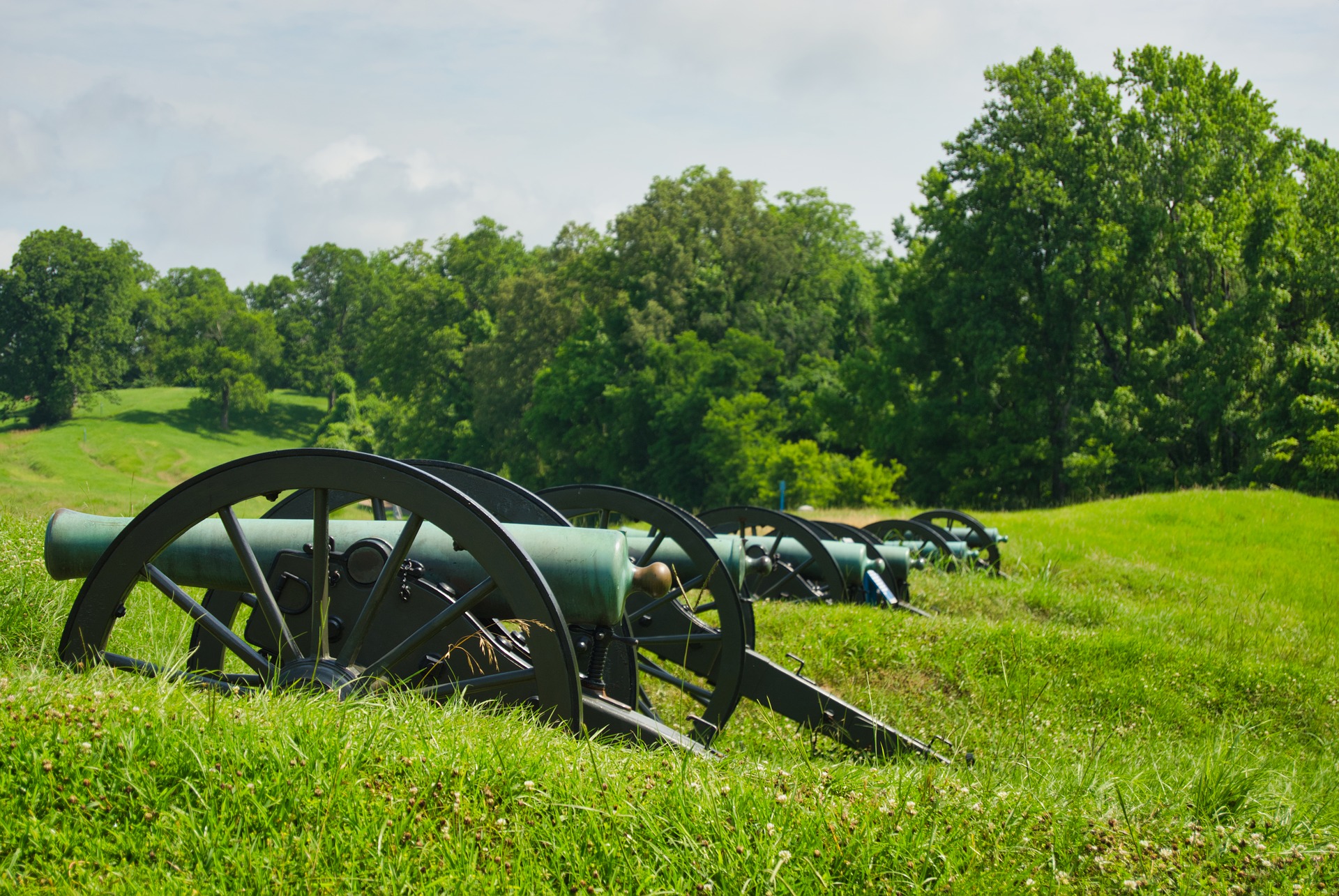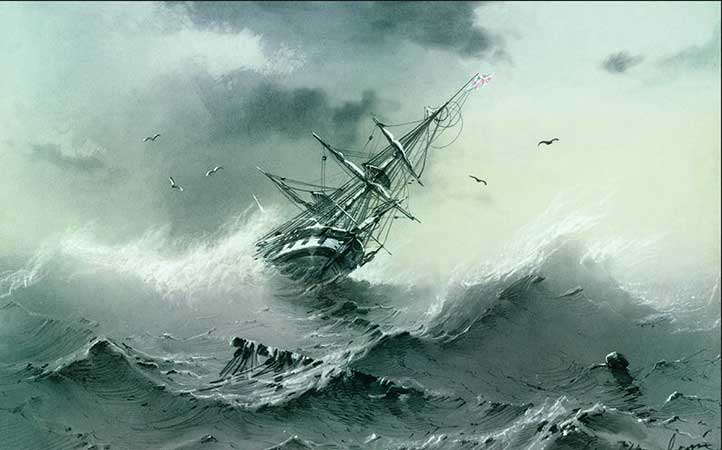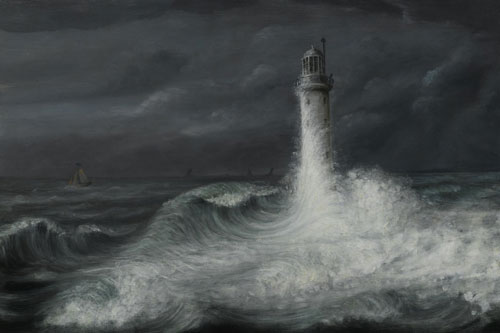Critical Analysis of The Inchcape Rock:
“The Inchcape Rock” is the best-known example of a ballad. It has a relatively simple rhyme scheme consisting of rhyming couplets. It uses diction that is the slightly antiquated. For example, he uses the word “joyaunce” to describe the mood of Sir Ralph and his crew aboard the ship on a pleasant day in spring. He uses the word “quoth” instead of the more common “said”. He also uses a word like “methinks” which readers are unlikely to come across in any other work than this poem, or one of the plays of Shakespeare. Most importantly, this poem tells a story that might have its foundation in folktales or legends. That is not to say that the story told by Southey here is entirely untrue, but that it is embellished with supernatural elements. The morality behind the story that is told is also rather simple. It is all black and white, instead of the gray and morally ambiguous characters, one finds in modern fiction. That is why when the wicked sailor who had schemed to make life difficult for other ships is himself punished for his wretched scheme, he has to call upon Christ the Lord to save him. However, Christ does not help Sir Ralph in any way. Christ will come to the aid of those who repent for their sins. But Sir Ralph is not one of them. He is so malicious that he has no regret for removing the bell of Inchcape Rock. As a result of this attitude, he has to pay for his bad deeds. He must die in the same way that he had planned for other sailors to perish. As he is dying, he is not even given a chance to redeem himself. Instead, it is made clear to readers that Sir Ralph s going to hell. That is why he is able to hear the Devil tolling the bells to mark his death and his subsequent entry into the underworld. Hence, because of its simple form and its fanciful subject matter, “The Inchcape Rock” is the perfect example of a ballad.
Stanza-wise Annotation of The Inchcape Rock:
Please note: N= noun, V=verb, Adj=Adjective, Adv=Adverb, P=Preposition
1st stanza:
Stir (N): A commotion
Still (Adj): Not moving or making a sound
Keel (N): The lengthwise timber or steel structure along the base of a ship, supporting the framework of the whole, in some vessels extended downwards as a ridge to increase stability
Steady (Adj): Firmly fixed, supported, or balanced; not shaking or moving
3rd stanza:
Abbot (N): A man who is the head of an abbey of monks
Buoy (N): An anchored float serving as a navigation mark, to show reefs or other hazards, or for mooring
4th stanza:
Surge (N): A sudden powerful forward or upward movement, especially by a crowd or by a natural force such as the tide
Swell (N): A gradual increase in amount, intensity, or volume
Mariners (N): Plural form of the word “mariner”, that is, a sailor
Perilous (Adj): Full of danger or risk
Blest (V): An older form of the word “blessed”, which is, in turn, the past tense of the word “bless”, that is, to ask God to look favorably on
5th stanza:
Gay (Adj): Light-hearted and carefree
Joyaunce (N): Delight; enjoyment
6th stanza:
Speck (N): A tiny spot
Rover (N): A person who spends their time wandering
Deck (N): A floor of a ship, especially the upper, open level extending for the full length of the vessel
7th stanza:
Mirthful (Adj): Full of mirth; merry or amusing
8th stanza:
Float (N): A thing that is buoyant in water
Quoth (V): An older form of the word “said”
Row (V): Propel (a boat) with oars
Plague (V): Cause continual trouble or distress to
10th stanza:
Gurgling (V): Present participle form of the word “gurgle”, that is, make a hollow bubbling sound like that made by water running out of a bottle
11th stanza:
Scour’d (V): Short form of the word “scored”, which is, in turn, the past tense of the word “scour”, that is, to clean or brighten the surface of (something) by rubbing it hard, typically with an abrasive or detergent
Plunder’d (V): Short form of the word “plundered”, which is, in turn, the past participle form of the word “plunder”, that is, to steal goods from (a place or person), typically using force and in a time of war or civil disorder
Store (N): A quantity or supply of something kept for use as needed
Steers (V): Third person present tense of the word “steer”, that is, to guide or control the movement of (a vehicle, vessel, or aircraft), for example by turning a wheel or operating a rudder
12th stanza:
Haze (N): A slight obscuration of the lower atmosphere, typically caused by fine suspended particles
Hath (V): An older form of the word “has”
Gale (N): A very strong wind
13th stanza:
Dawn (N): The first appearance of light in the sky before sunrise
14th stanza:
Canst (V): An older form of the word “can”
Breakers (N): Plural form of the word “breaker”, that is, a heavy sea wave that breaks into white foam on the shore
Methinks (V): It seems to me
15th stanza:
Drift (V): Be carried slowly by a current of air or water
Vessel (N): A ship or large boat
16th stanza:
Curst (V): An older form of the word “cursed”, which is, in turn, the past tense of the word “curse”, that is, to utter offensive words in anger or annoyance
Despair (N): The complete loss or absence of hope
Tide (N): The alternate rising and falling of the sea, usually twice in each lunar day at a particular place, due to the attraction of the moon and sun
17th stanza:
Dreadful (Adj): Causing or involving great suffering, fear, or unhappiness; extremely bad or serious
Devil (N): (In Christian and Jewish belief) the supreme spirit of evil; Satan
Knell (N): The sound of a bell, especially when rung solemnly for a death or funeral
Poetic Devices in The Inchcape Rock:
Rhyme scheme:
“The Inchcape Rock” consists of 17 quatrains written in rhyming couplets. Hence the poet follows the following rhyme scheme in this poem – AA BB CC and so on.
Rhetorical devices:
5th stanza:
Transferred epithet:
This rhetorical device is used when an emotion is attributed to a non-living thing after being displaced from a person, most often the poet himself or herself. In this stanza, the poet uses the device of transferred epithet when he says that the sun was gay or happy on a certain day. Of course, it is not that the sun itself is happy, but rather that the sunlit day is making everyone happy.
13th stanza:
Metaphor:
This rhetorical device is used when a covert comparison is made between two different things or ideas. In this stanza, the poet uses the device of metaphor to compare the rising of the moon with the dawn, since the light of the moon will light up the sky after the storm.
14th stanza:
Transposed sentence:
Poets often change the sequence of words in their lines in order to maintain the rhyme scheme chosen by them for that particular poem. In this stanza, the poet uses the device of a transposed sentence when he writes “Now where we are I cannot tell” instead of writing “Now I cannot tell where we are”, the latter being the more grammatically correct of the two.
Central Idea of The Inchcape Rock:
A pirate named Sir Ralph removes the bell that has been installed at the Inchcape Rock by the Abbot of Aberbrothok to indicate its position to sailors who might then be warned not to collide with it. A year later, Sir Ralph’s ship hits the same reef and is sunk. Sir Ralph dies to the sound of the Devil tolling the bells for his death.
Themes of The Inchcape Rock:
Romantic elements: Southey is a Romantic poet, and so it should not surprise us that his ballads also have certain Romantic elements in them. In this poem, nature is portrayed at both it’s most beautiful and it’s most violent. Moreover, the poem has a tinge of the Gothic as well. It is set in the past, at a far-away and exotic locale, and it also features the supernatural element of the Devil tolling the bells for Sir Ralph’s death.
Poetic justice: The story told by Southey here comes with a moral. That moral is revealed through poetic justice for Sir Ralph. He had sought to make the journey to Scotland via the Inchcape Rock difficult for other sailors, but in fact, that journey proved fatal for him. This shows that one with bad intentions is punished by his own misdeeds.
The tone of The Inchcape Rock:
The tone of this poem is one of mounting excitement. Readers are hooked to the story being told. Southey could easily have become didactic and preachy with the lesson that he wants to teach his readers, but that is not the case here.
Conclusion:
“The Inchcape Rock” is one of the most popular poems by Southey because of it both delights and instructs its readers. It tells a story with a moral but does not aim to teach his readers a lesson. His descriptions of nature are beautiful, and his descriptions of supernatural elements are sublime. All in all, the poem is easy to follow and very rhythmical.
Some online learning platforms provide certifications, while others are designed to simply grow your skills in your personal and professional life. Including Masterclass and Coursera, here are our recommendations for the best online learning platforms you can sign up for today.
The 7 Best Online Learning Platforms of 2022
- Best Overall: Coursera
- Best for Niche Topics: Udemy
- Best for Creative Fields: Skillshare
- Best for Celebrity Lessons: MasterClass
- Best for STEM: EdX
- Best for Career Building: Udacity
- Best for Data Learning: Pluralsight
















